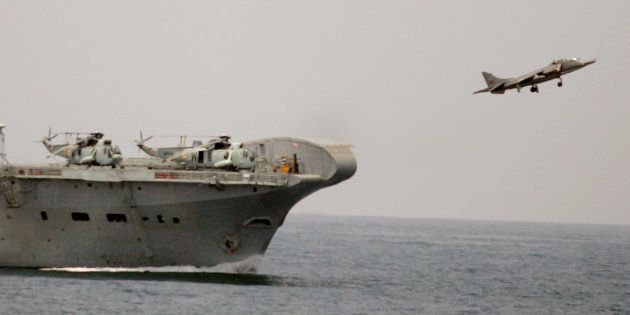
BENGALURU -- India's navy is in the hunt for a new foreign fighter jet after rejecting an indigenously made aircraft as too heavy, the latest sign of the struggle to get Asian militaries to buy locally to grow their defence industries.
The navy last month invited manufacturers to pitch for 57 planes for its aircraft carriers, a multi-billion dollar order the government had hoped would go to the state-run producers of India's Tejas, a combat aircraft 33 years in the making.
India, South Korea, Taiwan and other Asian buyers are expected to intensify efforts this year to develop indigenous warplanes, military officials said, due to anxieties that the United States may be less engaged in the region under President Donald Trump.
But their hopes of manufacturing state-of-the-art warplanes could still be decades away as countries need more time to master the technology, experts said.
"It's been long on ambition short on success," Richard A. Bitzinger, senior fellow at Singapore's S. Rajaratnam School of International Studies, said of the drive.
"These things are being done because of techno-nationalism. They are done because these countries perceive of themselves as rising powers."
As part of Prime Minister Narendra Modi's "Make-in-India" campaign, scientists will showcase the Tejas warplane at an air show opening in Bengaluru on Tuesday. But the jet remains a work in progress, with only three in service with the air force.
South Korea, supported by Indonesia, has multi-billion dollar plans to develop a twin-engined KF-X fighter jet, while Taiwan said this month it plans to build 66 jet trainer aircraft that could eventually help it manufacture a combat plane.
Chang Yeoung-keun, an adviser on the KF-X fighter jet project and a professor at Korea Aerospace University, said full development of the plane and its technologies will take decades.
"South Korea needs to develop core technologies of the jets, not just shells," he said. "I am sceptical. South Korea may be able to develop core technology in 30 to 40 years, but they have to develop them in 10 years, with current fighter jets ageing."
Cleared by the government in 1983, the Indian plane was meant to be the backbone of the air force due for induction in 1994.
Instead, it suffered years of delay with scientists trying to build the world's most modern light combat aircraft from scratch, including the engine.
In December, the navy chief, Admiral Sunil Lanba, said the sea version of the plane was "not up to the mark" and it could not take off from an aircraft carrier once weapons were loaded.
A source in the navy said that the plane for years has failed flight tests when taking off from a 200-metre carrier deck with weapons on board. That prompted the navy to issue a request last month for information for a foreign fighter to fill the gap, the first stage in a long procurement process.
Boeing Co has pitched its F-A/18 Hornet, that the U.S. navy flies from its carriers, to the Indian defence ministry, including an offer to build it locally.
Sweden's Saab AB said on Friday it will offer the naval version of its Gripen fighter to the Indian navy.
India's top defence scientists said they were disappointed by the navy's decision and that fighter aircraft development was a challenge everywhere, including with the U.S. Joint Strike Fighter, the F-35.
"Look at the F-35, with all the might of the multinational effort, is still evolving," said a source in the aeronautical development agency which is spearheading the LCA effort.
"There are no shortcuts."
(Additional reporting by Hyunjoo Jin in SEOUL, JR Wu in TAIPEI, Timothy Kelly in TOKYO, Saad Sayeed in ISLAMABAD and Joseph Sipalan in KUALA LUMPUR; Editing by Randy Fabi)
Also on HuffPost India
